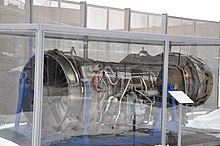
The Bristol Aeroplane Company, originally the British and Colonial Aeroplane Company, was both one of the first and one of the most important British aviation companies, designing and manufacturing both airframes and aircraft engines. Notable aircraft produced by the company include the 'Boxkite', the Bristol Fighter, the Bulldog, the Blenheim, the Beaufighter, and the Britannia, and much of the preliminary work which led to Concorde was carried out by the company. In 1956 its major operations were split into Bristol Aircraft and Bristol Aero Engines. In 1959, Bristol Aircraft merged with several major British aircraft companies to form the British Aircraft Corporation (BAC) and Bristol Aero Engines merged with Armstrong Siddeley to form Bristol Siddeley.

The British Aircraft Corporation (BAC) was a British aircraft manufacturer formed from the government-pressured merger of English Electric Aviation Ltd., Vickers-Armstrongs (Aircraft), the Bristol Aeroplane Company and Hunting Aircraft in 1960. Bristol, English Electric and Vickers became "parents" of BAC with shareholdings of 20%, 40% and 40% respectively. BAC in turn acquired the share capital of their aviation interests and 70% of Hunting Aircraft several months later.

The Rolls-Royce Pegasus is a British turbofan engine originally designed by Bristol Siddeley. It was manufactured by Rolls-Royce plc. The engine is not only able to power a jet aircraft forward, but also to direct thrust downwards via swivelling nozzles. Lightly loaded aircraft equipped with this engine can manoeuvre like a helicopter. In particular, they can perform vertical takeoffs and landings. In US service, the engine is designated F402.

The Rolls-Royce Olympus was the world's second two-spool axial-flow turbojet aircraft engine design, first run in May 1950 and preceded only by the Pratt & Whitney J57, first-run in January 1950. It is best known as the powerplant of the Avro Vulcan and later models in the Concorde SST.
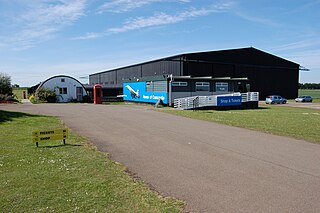
The National Museum of Flight is Scotland's national aviation museum, at East Fortune Airfield, just south of the village of East Fortune, Scotland. It is one of the museums within National Museums Scotland. The museum is housed in the original wartime buildings of RAF East Fortune which is a well preserved World War II airfield. As a result of this the entire site is a scheduled monument with no permanent structures added by the museum. The hangars, control tower and stores were designated as Category B listed buildings by Historic Scotland, but this designation was removed in 2013 as they were already covered by the stricter scheduling.

Bristol Siddeley Engines Ltd (BSEL) was a British aero engine manufacturer. The company was formed in 1959 by a merger of Bristol Aero-Engines Limited and Armstrong Siddeley Motors Limited. In 1961 the company was expanded by the purchase of the de Havilland Engine Company and the engine division of Blackburn Aircraft. Bristol Siddeley was purchased by Rolls-Royce Limited in 1966.

Filton Airport or Filton Aerodrome was a private airport in Filton and Patchway, within South Gloucestershire, 4 NM north of Bristol, England.
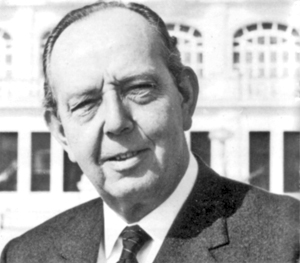
Sir Stanley George Hooker, CBE, FRS, DPhil, BSc, FRAeS, MIMechE, FAAAS, was a mathematician and jet engine engineer. He was employed first at Rolls-Royce where he worked on the earliest designs such as the Welland and Derwent, and later at Bristol Aero Engines where he helped bring the troubled Proteus turboprop and the Olympus turbojet to market. He then designed the famous Pegasus vectored thrust turbofan used in the Hawker Siddeley Harrier.
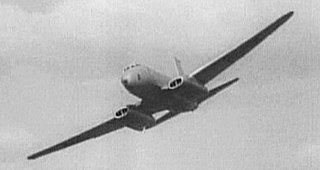
The Avro 706 Ashton was a British prototype jet airliner made by Avro during the 1950s. Although it flew nearly a year after the de Havilland Comet, it represented an experimental programme and was never intended for commercial use.

The Fleet Air Arm Museum is devoted to the history of British naval aviation. It has an extensive collection of military and civilian aircraft, aero engines, models of aircraft and Royal Navy ships, and paintings and drawings related to naval aviation. It is located on RNAS Yeovilton airfield, and the museum has viewing areas where visitors can watch military aircraft take off and land. At the entrance to the museum are anchors from HMS Ark Royal and HMS Eagle, fleet carriers which served the Royal Navy until the 1970s. It is located 7 miles (11 km) north of Yeovil, and 40 miles (64 km) south of Bristol.
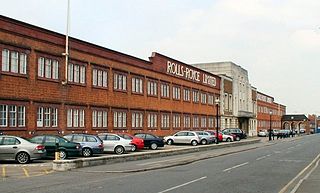
Rolls-Royce Limited was a British luxury car and later an aero-engine manufacturing business established in 1904 in Manchester by the partnership of Charles Rolls and Henry Royce. Building on Royce's good reputation established with his cranes, they quickly developed a reputation for superior engineering by manufacturing the "best car in the world". The business was incorporated as "Rolls-Royce Limited" in 1906, and a new factory in Derby was opened in 1908. The First World War brought the company into manufacturing aero-engines. Joint development of jet engines began in 1940, and they entered production in 1944. Rolls-Royce has since built an enduring reputation for the development and manufacturing of engines for military and commercial aircraft.

The Hawker Siddeley HS-121 Trident is a British airliner produced by Hawker Siddeley. In 1957, de Havilland proposed its DH.121 trijet design to a British European Airways (BEA) request. By 1960, de Havilland had been acquired by Hawker Siddeley. The Trident's maiden flight happened on 9 January 1962, and it was introduced on 1 April 1964, two months after its main competitor, the Boeing 727. By the end of the programme in 1978, 117 Tridents had been produced. The Trident was withdrawn from service in 1995.

The Rolls-Royce/Snecma Olympus 593 was an Anglo-French turbojet with reheat, which powered the supersonic airliner Concorde. It was initially a joint project between Bristol Siddeley Engines Limited (BSEL) and Snecma, derived from the Bristol Siddeley Olympus 22R engine. Rolls-Royce Limited acquired BSEL in 1966 during development of the engine, making BSEL the Bristol Engine Division of Rolls-Royce.
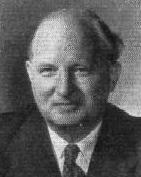
Arthur Alexander Cecil Rubbra CBE was an English engineer who designed many of Rolls-Royce's successful aero engines. He was "placed by many alongside Royce, Rowledge and Elliot as one of Rolls-Royce's greatest engineers...".
Alfred Cyril Lovesey CBE, AFRAeS, was an English engineer who was a key figure in the development of the Rolls-Royce Merlin aero engine.
Adrian Albert "Lom" Lombard, CBE was an English aeronautical engineer. Despite having no formal training in aerodynamics, he became one of the world's foremost designers of jet engines. He was involved with the Rolls-Royce company in a variety of roles for almost 30 years.

The Bristol Type 200 was a proposal for a short-range aircraft by the Bristol Aeroplane Company in 1956. Although it was designed in response to a specification issued by British European Airways (BEA), the Type 200 was larger than the airline's requirements and was closer to the Boeing 727 in size and range. The project was cancelled when BEA selected the Hawker Siddeley Trident instead. The Trident went on to have a production run of 117, while the 727 had a production run of over 1800. Along with the Vickers V-1000, it is seen by some as one of the great "what ifs" of British aviation, although it never got beyond the drawing board.
Arthur Valentine Cleaver OBE FRAeS was a distinguished British rocket engineer. He co-authored a paper which discussed the possibilities and problems of nuclear rocket engines in 1948. After the Second World War he developed de Havilland's Sprite and Spectre rocket engines. He moved to Rolls-Royce in 1957 and in 1960 he became general manager and chief engineer of the Rolls-Royce's rocket departments, where he was responsible for the engines which powered the Blue Streak missile and Black Arrow launch vehicle. While the ELDO vehicle was ultimately unsuccessful and abandoned, the Blue Streak vehicle and its engines worked perfectly on every launch, and Cleaver was awarded the OBE for his part in developing them.

The Rolls-Royce Olympus turbojet engine was developed extensively throughout its production run, the many variants can be described as belonging to four main groups.
Soviet industrial espionage of the Concorde programme is alleged to have been carried out from 1959 to 1976. Not all allegations have been verified, but documents from Sud Aviation and BAC development did reach Soviet hands.
